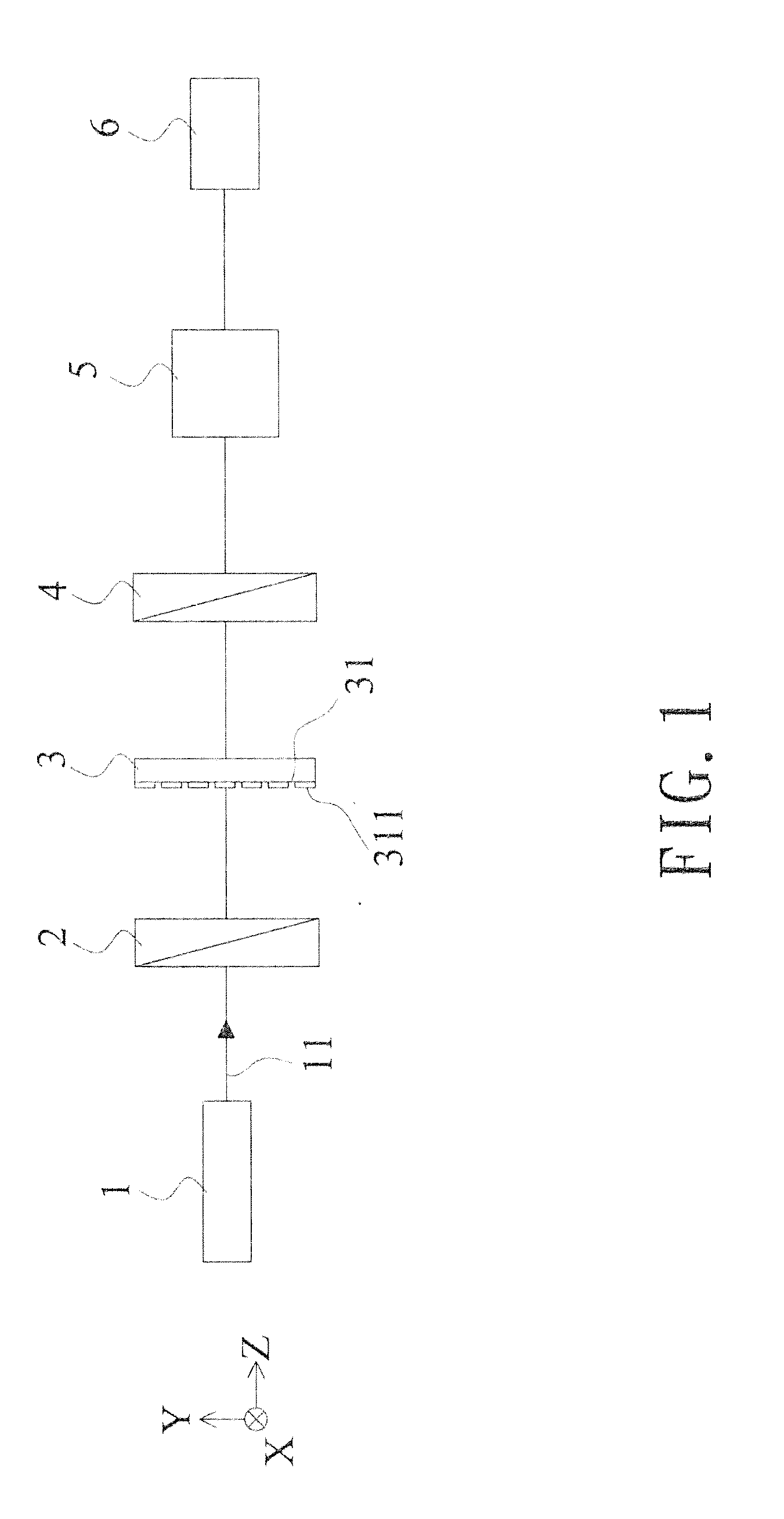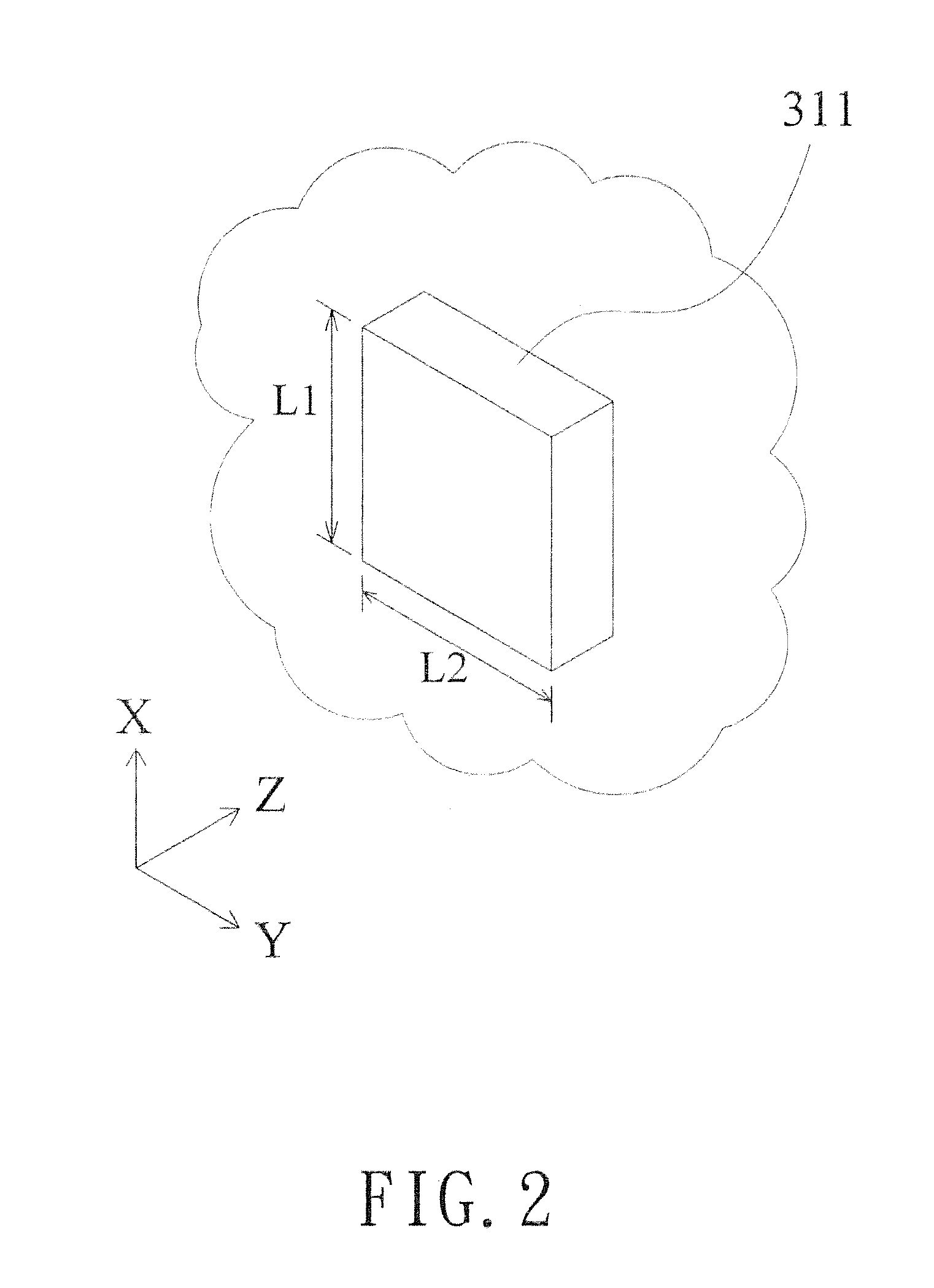Localized surface plasmon resonance sensing system with anisotropic particles
a sensing system and localized surface plasmon technology, applied in the field of localized surface plasmon resonance sensing system with anisotropic particles, can solve the problems of increasing manufacturing costs, complicated manufacturing process of test specimens, and commercialization of techniques, and achieve the effect of improving the fom of the sensing system
- Summary
- Abstract
- Description
- Claims
- Application Information
AI Technical Summary
Benefits of technology
Problems solved by technology
Method used
Image
Examples
Embodiment Construction
[0023]LSPR is a collective oscillation of free electrons in metallic nanostructures. The excitation of LSPRs results in characteristic peaks and troughs in spectra of transmittance and reluctance. In addition, the phase of the transmittance and reflectance would be manipulated by the LSPR thus resulting in optical phenomena such as steep phase transition and phase retardation. The phase variations of LSPR are possible to be measured using ellipsometry. The main optical components of the ellipsometer include a light source, a polarizer, an analyzer, a monochromator, and a detector. The use of compensators in the optical path of ellipsometer is optional, depending on the applications. An ellipsometer measures the complex ratio between two perpendicular components of electric field of light such as Ex and Ey. That is
τ=EyEx=tan(ψ)Δ
where, tan(Ψ) is the amplitude ratio and Δ is the phase difference.
[0024]Refer to FIG. 1, a block diagram of an embodiment of a LSPR sensing system according ...
PUM
 Login to View More
Login to View More Abstract
Description
Claims
Application Information
 Login to View More
Login to View More - R&D
- Intellectual Property
- Life Sciences
- Materials
- Tech Scout
- Unparalleled Data Quality
- Higher Quality Content
- 60% Fewer Hallucinations
Browse by: Latest US Patents, China's latest patents, Technical Efficacy Thesaurus, Application Domain, Technology Topic, Popular Technical Reports.
© 2025 PatSnap. All rights reserved.Legal|Privacy policy|Modern Slavery Act Transparency Statement|Sitemap|About US| Contact US: help@patsnap.com



